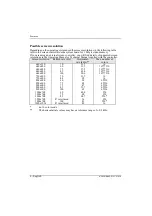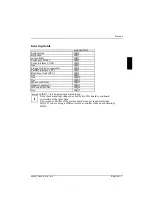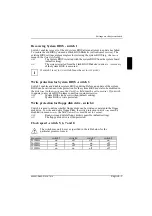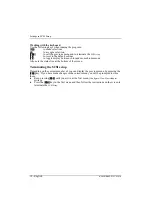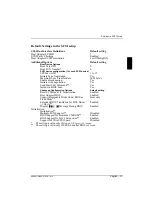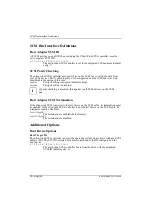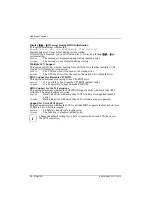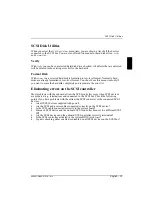
SCSI Bus Interface Definitions
20 - English
A26361-D992-Z121-2-7419
SCSI Bus Interface Definitions
Host Adapter SCSI ID
All SCSI devices on one SCSI bus, including the Ultra-Wide SCSI controller, must be
set to separate SCSI IDs.
0, 1, 2, 3, 4, 5, 6, 7, 8, 9, 10, 11, 12, 13, 14, 15
The ultra-wide SCSI controller is set to the displayed SCSI address (default
entry:
7
).
SCSI Parity Checking
The ultra-wide SCSI controller uses parity bits on the SCSI bus to verify the data from
your SCSI devices. Parity checking may not be supported on older SCSI devices. You
must disable the option in this case.
Enabled
Parity checking is enabled (default setting).
Disabled
Parity checking is disabled.
i
If parity checking is disabled, this applies to all SCSI devices on the SCSI
bus.
Host Adapter SCSI Termination
If the ultra-wide SCSI controller is the last device on the SCSI cable, its termination must
be enabled. If the ultra-wide SCSI controller is not the last device on the SCSI cable, its
terminator must be disabled.
LowON/HighON
The termination is enabled (default entry).
LowOFF/HighOFF
The termination is disabled.
Additional Options
Boot Device Options
Boot Target ID
The ultra-wide SCSI controller can start the operating system from a drive with any SCSI
address (ID). The SCSI ID selected here must correspond to the ID configured on the
boot device.
0, 1, 2, 3, 4, 5, 6, 7, 8, 9, 10, 11, 12, 13, 14, 15
The ultra-wide SCSI controller boots from the drive with the displayed
SCSI ID (default entry:
0
).

